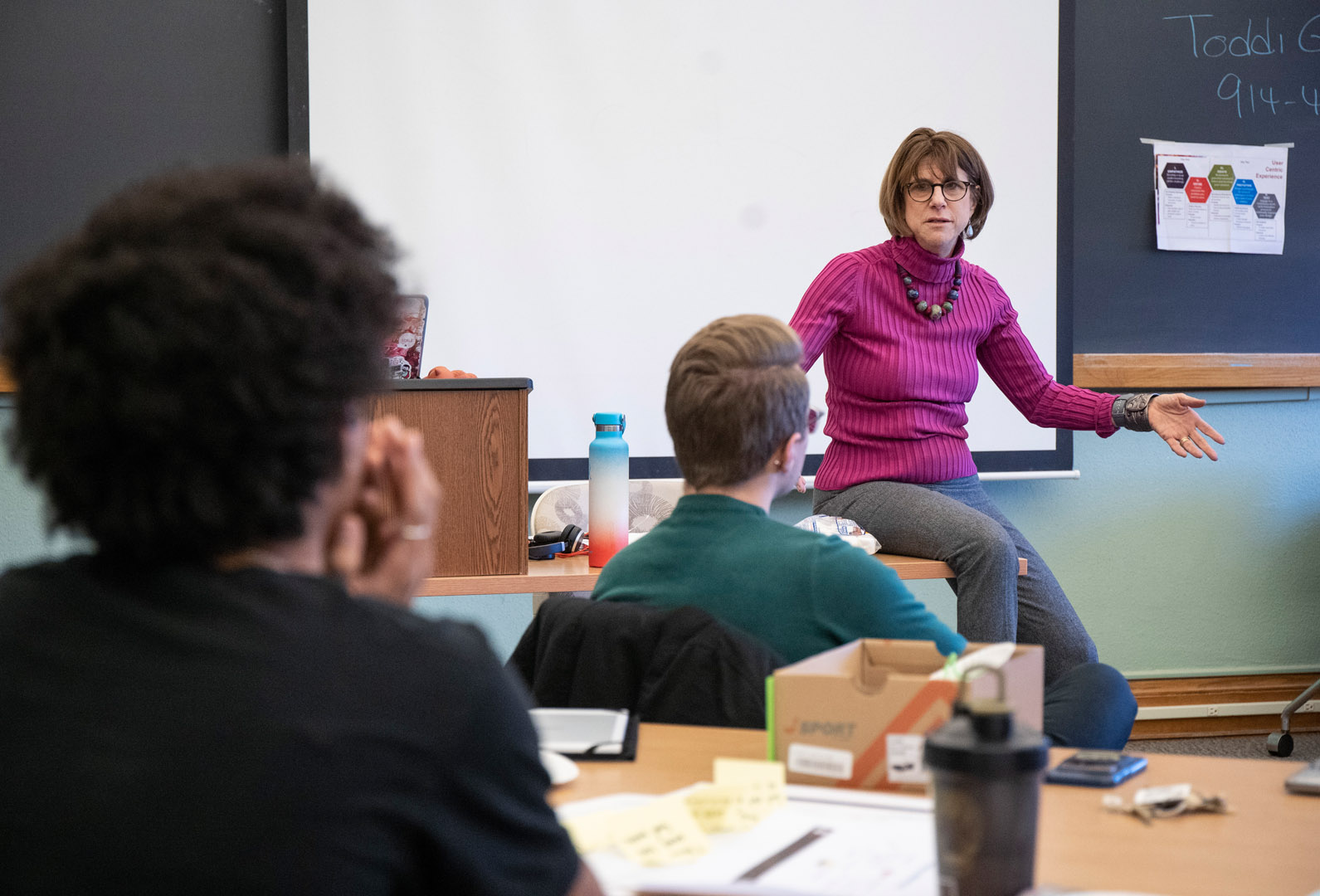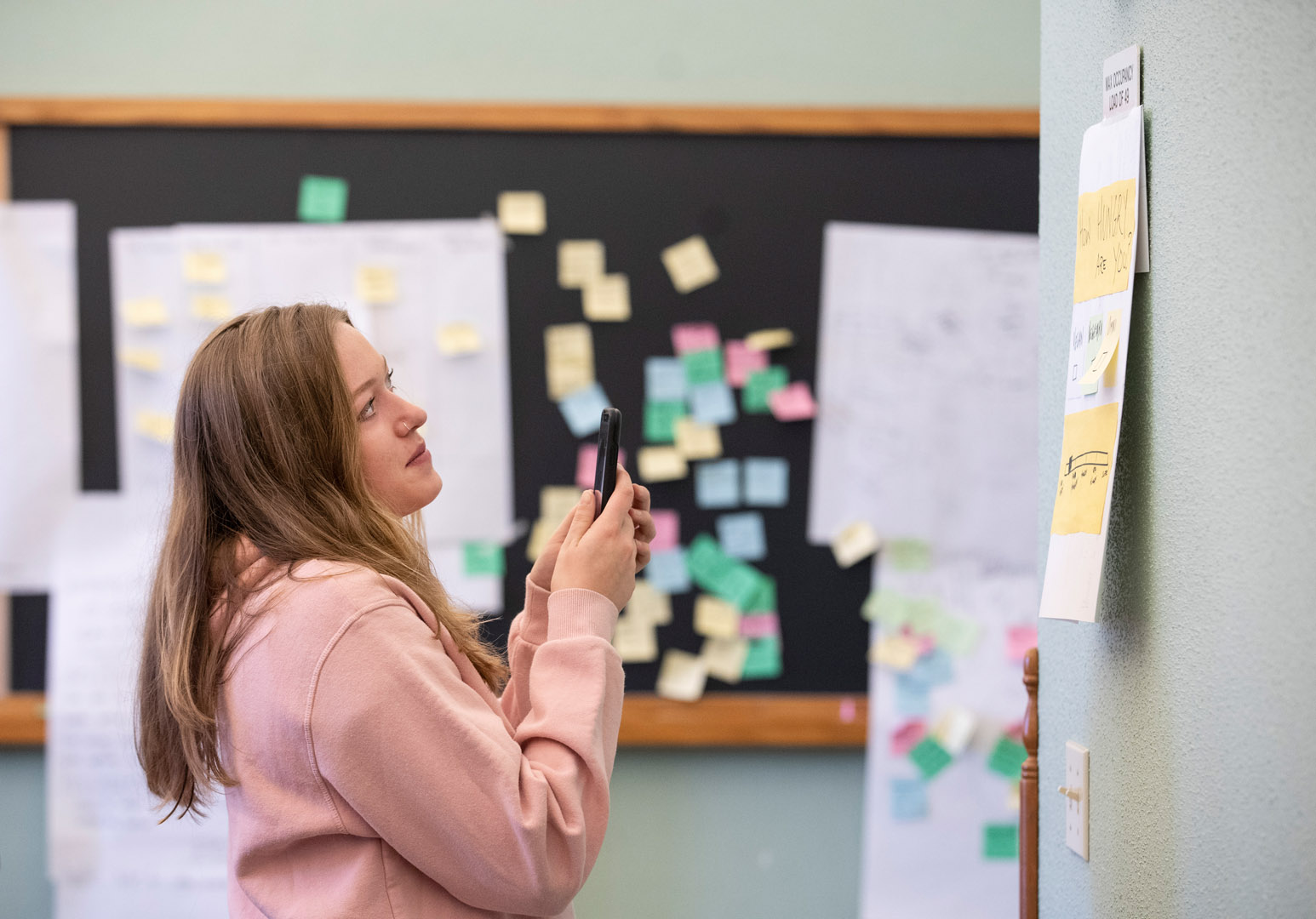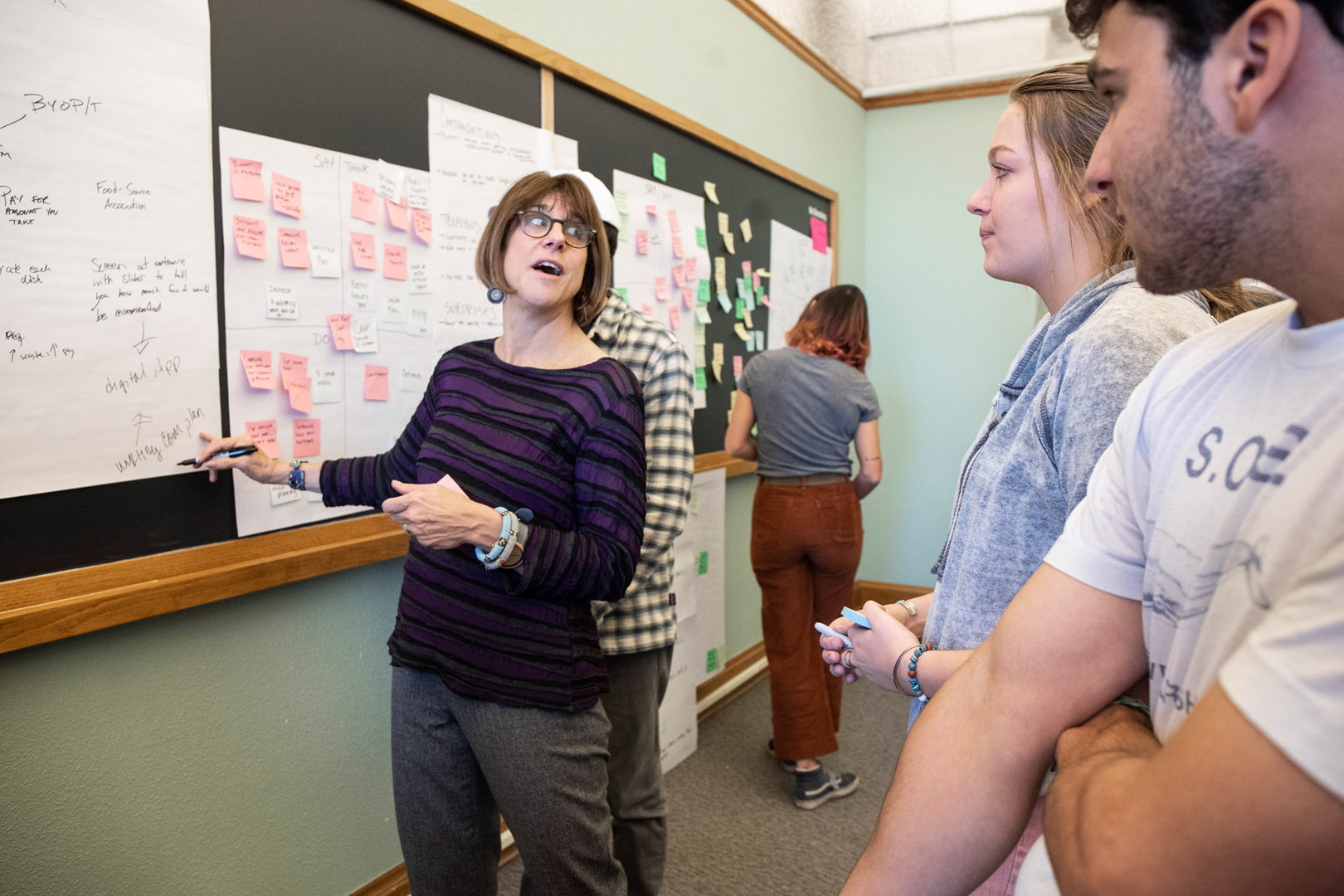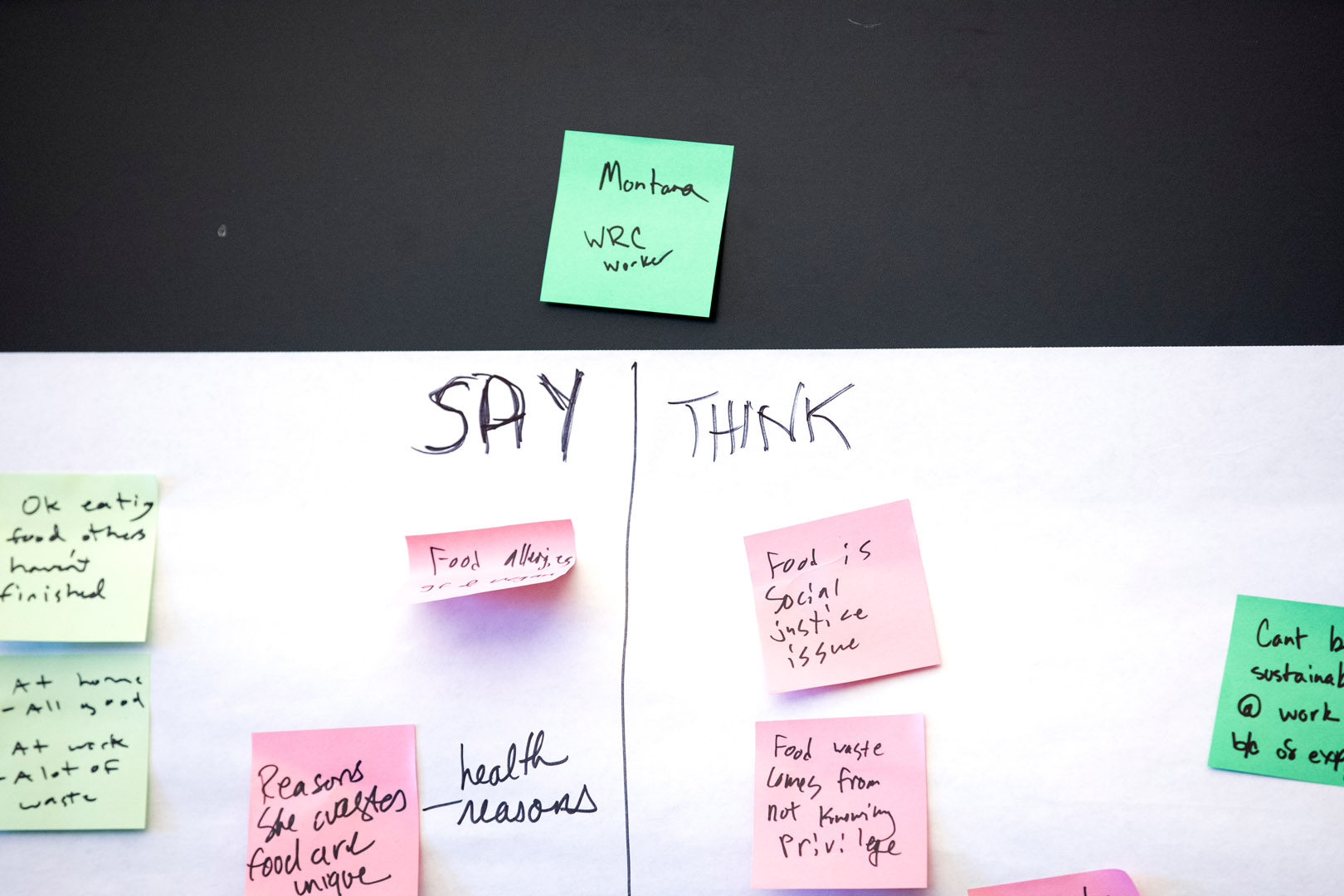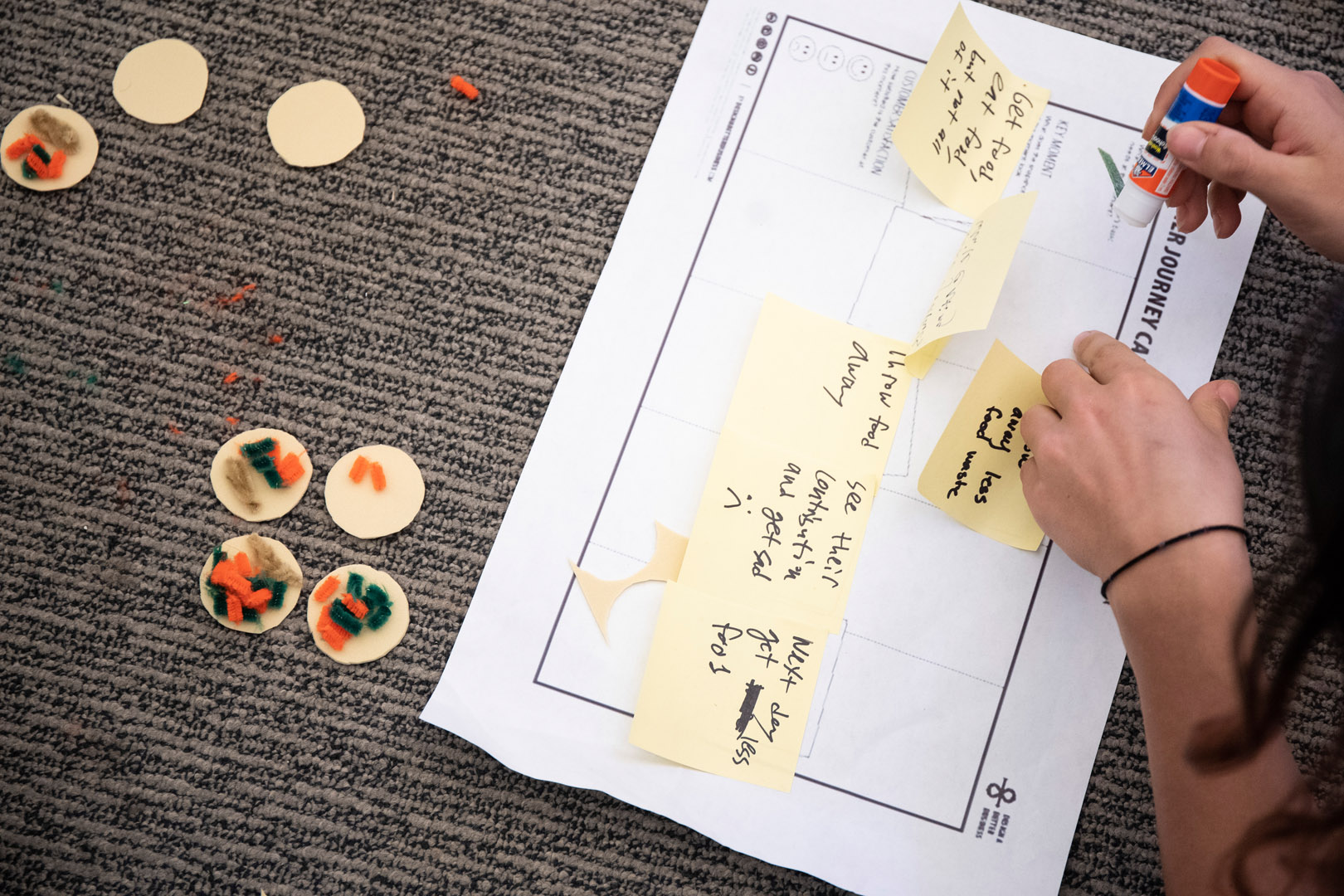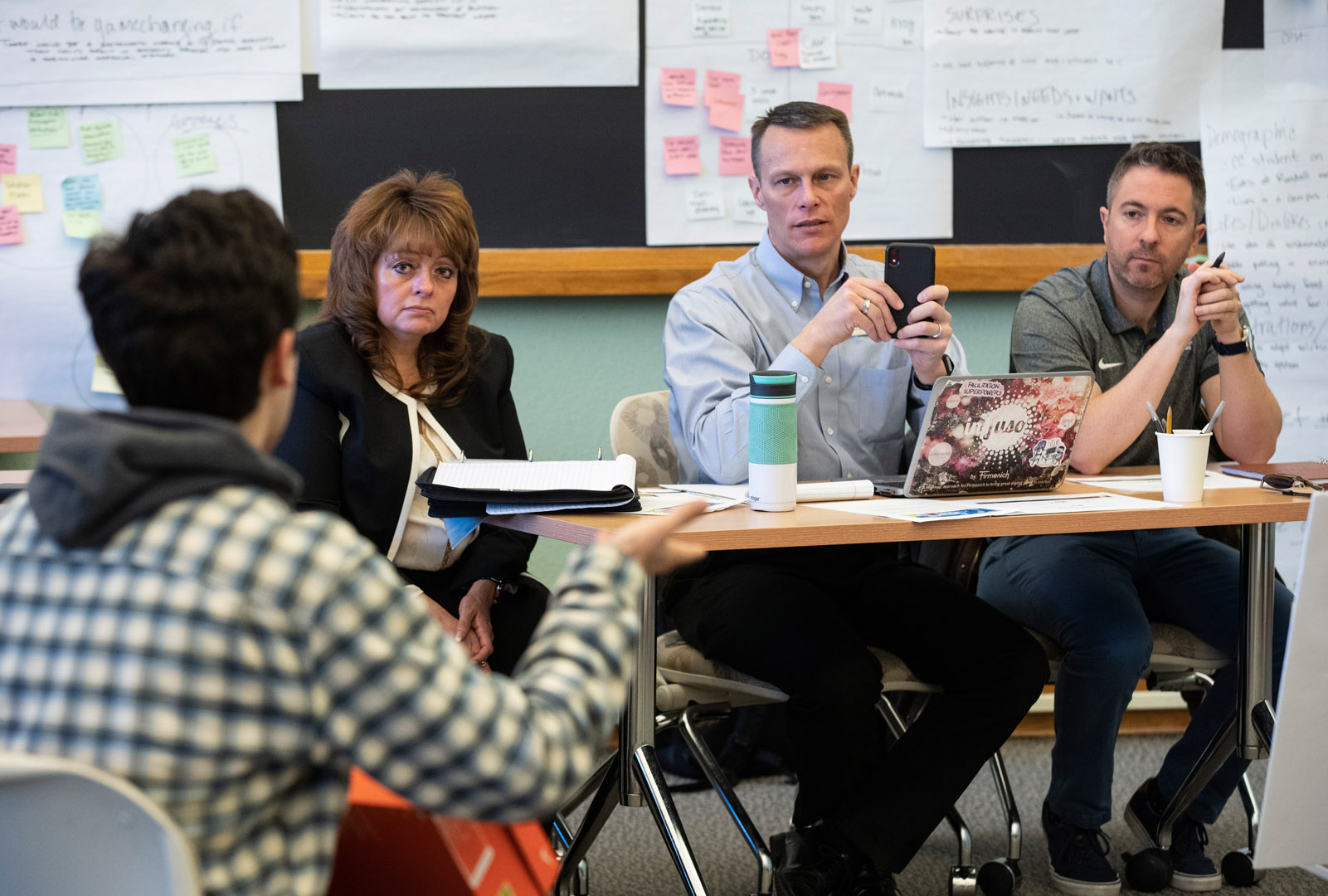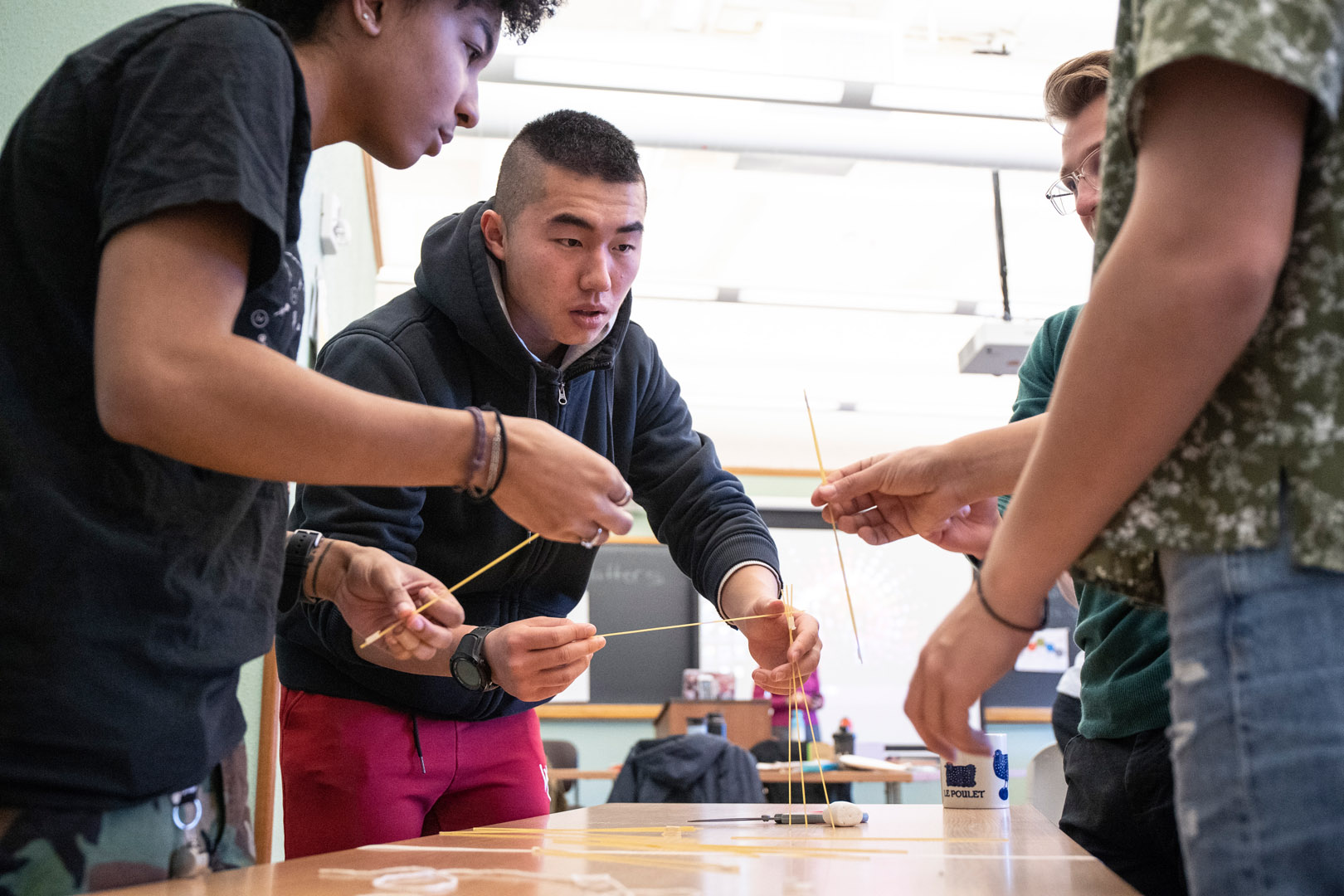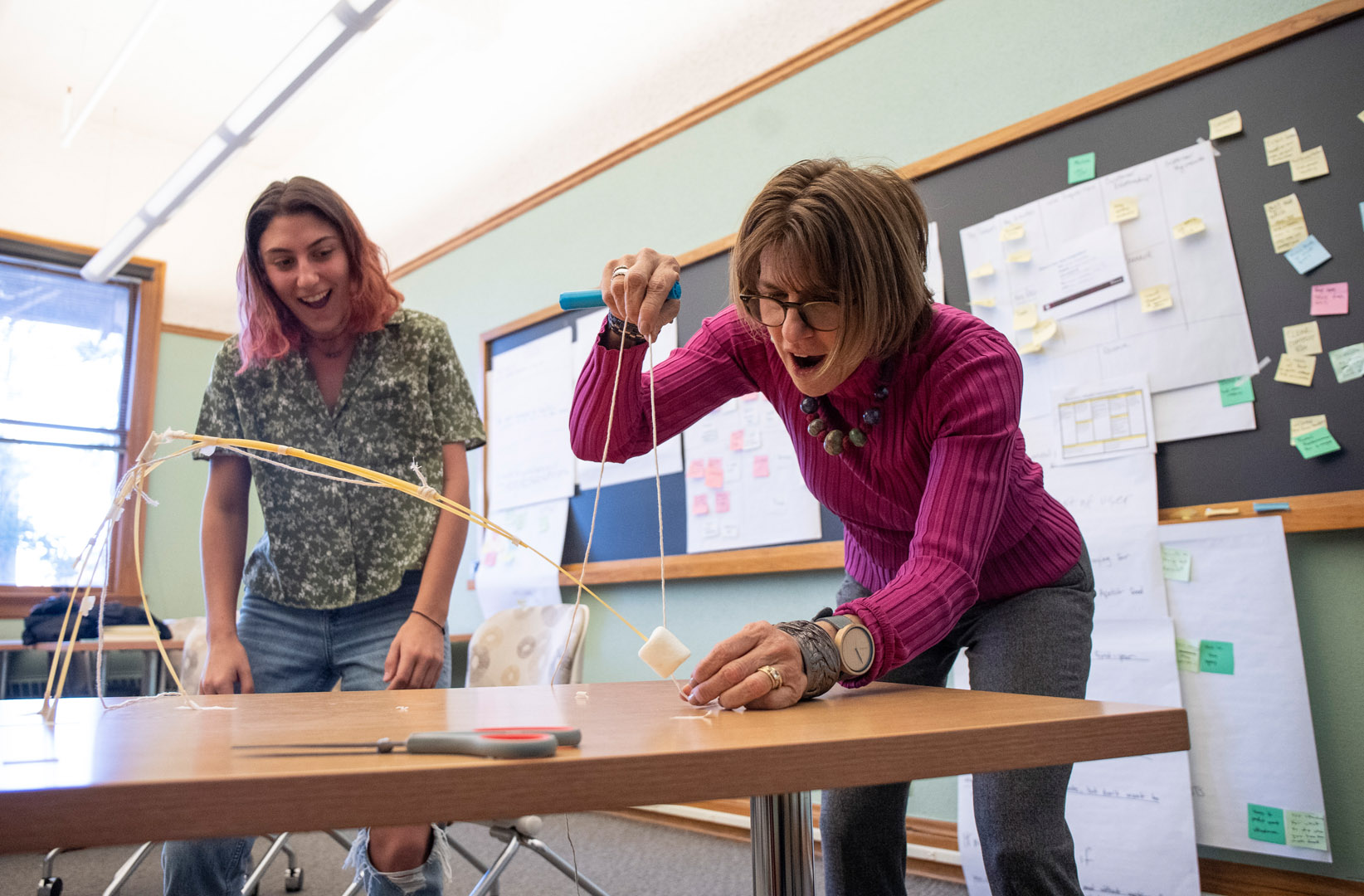What does "design thinking" have to do with food waste?
During Half Block 2020, students spent five days tackling the question, "How might we transform students' relationships with food to radically reduce food waste at Colorado College?" Toddi Gutner P'21, design thinking strategist, award-winning journalist, writer, editor, and contributing writer for The Wall Street Journal (and a parent of a CC student) taught the design thinking class The Art of Innovation: An Immersion.
"Life is about learning and that means learning skills that are beyond the books. I believe giving students these lifelong skills in a setting where they aren't graded or credited gives them useful capabilities that will make them more adaptable and marketable in the real world," says Gutner.
Students created solutions for food waste on campus, working as a team with students from other classes to experience the importance of "radical collaboration." The hands-on course aimed to prepare students to be future innovators in design thinking, the methodology pioneered by IDEO and Stanford University d school founder David Kelley.
According to IDEO, design thinking is a process for creative problem solving which has a human-centered core. It encourages organizations to focus on the people they're creating for, which leads to better products, services, and internal processes.
In design thinking, you pull together what's desirable from a human point of view with what is technologically feasible and economically viable. It also allows those who aren't trained as designers to use creative tools to address a vast range of challenges. The process starts with taking action and understanding the right questions. It's about embracing simple mindset shifts and tackling problems from a new direction.
At the conclusion of the class, the students presented their prototypes to members of the CC administration for possible pilot projects.
Deming Haines '21 was a student in the Art of Innovation design thinking class.
He worked on a prototype for a coffee shop that consisted of popsicle sticks/people sliding along cut out grooves on a paper plate.
He explains the design like this: "This prototype of an interior floor plan for a coffee shop is designed to push people to socialize without making them put in any extra effort. Upon talking to my 'client', Liza, she says that she loves going to coffee shops and always wants to strike up a conversation with people, but finds it hard and awkward to introduce herself.
"This coffee shop's furniture (chairs and tables) are on a moving track. If you choose to sit at a table far in the corner, this table won't be there for long. As time passes, you slowly start to notice your chair and table drifting along the floor. What was once an isolated seat, is now next to many other seats. This gives people an incentive to at least say hello as they slowly drift and pass people around the coffee shop. Not only will this encourage the mingling of everyone in the shop, but it would also make it a subtly engaging experience that may help people stay alert when they need to work."
Half Block at Colorado College provides for-credit and non-credit opportunities for students looking to capitalize on their Winter Break. During this nine-day period, students explore unique courses and offerings aimed at better preparing them with the academic, professional, and practical skills needed to transition to life after college.



